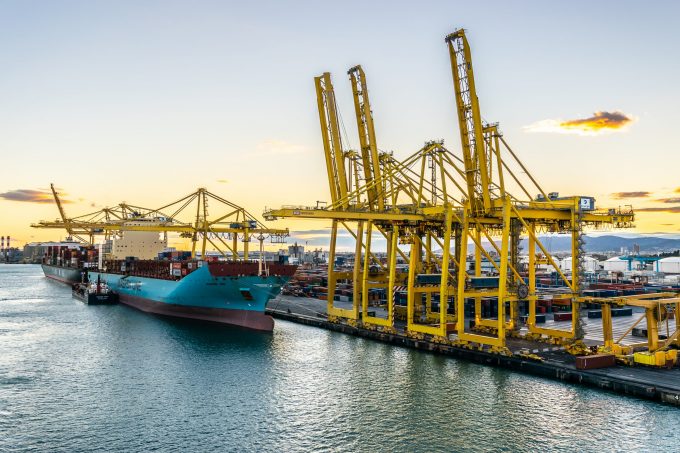Conf call redux: Mærsk has a plan, folks...
Time to crack on chaps

Pressure seems to be easing on West Mediterranean ports after a difficult few weeks, when bad weather compounded the issues arising from the Red Sea attacks.
Just at the start of the week, reports warned of spiking manufacturing costs and parts shortages, with a number of terminals noting that they were near to full and concerned about the continuing flow of vessels, with many awaiting berthing slots.
Today, however, a spokesperson for Maersk told The Loadstar the “short term” issues had begun to ease.
“We recognise there has been short-term pressure on our terminals. This was caused by unusually bad weather during the month of March in the Western Med, combined with the needed vessel schedule changes as a result of the Red Sea challenges,” they said.
“We now see significant improvements and are currently reverting back to normal operations.”
The spokesperson noted this was due to the carrier having gained “strong control” over its cargo flows in recent weeks and initiating “proactive measures” to mitigate pressures of high yard densities, including multiple omissions, diversions, and flow adjustments.
Data from eeSea suggests that Maersk is not mistaken in claiming the situation in the West Mediterranean is calming but to claim it is back to normal may be a stretch.
According to the data Algeciras has 56% of ships waiting at anchor offshore, while for Barcelona it is 57% but this does represent a step change from last week where it was at 69% for the Spanish gateway, having been at 60% the week before.
Other terminal operators, including TTI Algeciras and Morocco’s TC3 terminal, told the Financial Times on Tuesday that they had been almost full.
Behind the surging volumes is the impact of the Iranian-backed Houthi militia’s assault on merchant shipping in the Red Sea, which has forced all but a few vessels to reroute around Africa’s Cape of Good Hope to avoid being caught in the cross-fire.
This in turn has upended cargo flows, with goods typically discharged at East Med ports, being discharged in western terminals and feeder shipped to their final destinations.
Year-on-year figures from the Port of Barcelona indicate the scale of this shift in trade patterns, with the Catalonian gateway having experienced a 17% year-on-year uptick in its February volumes.
Comment on this article